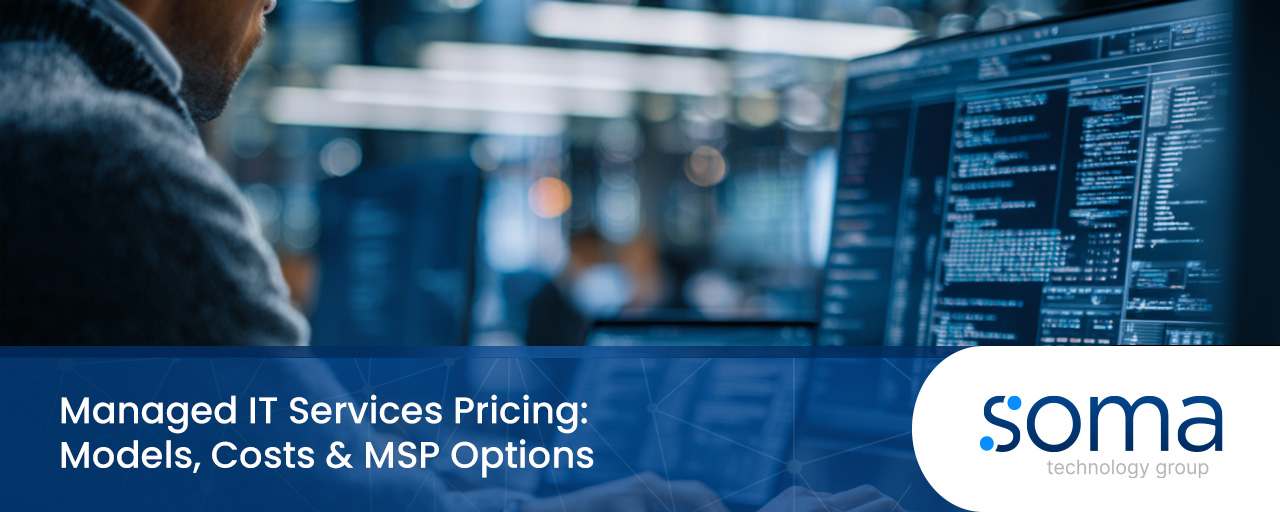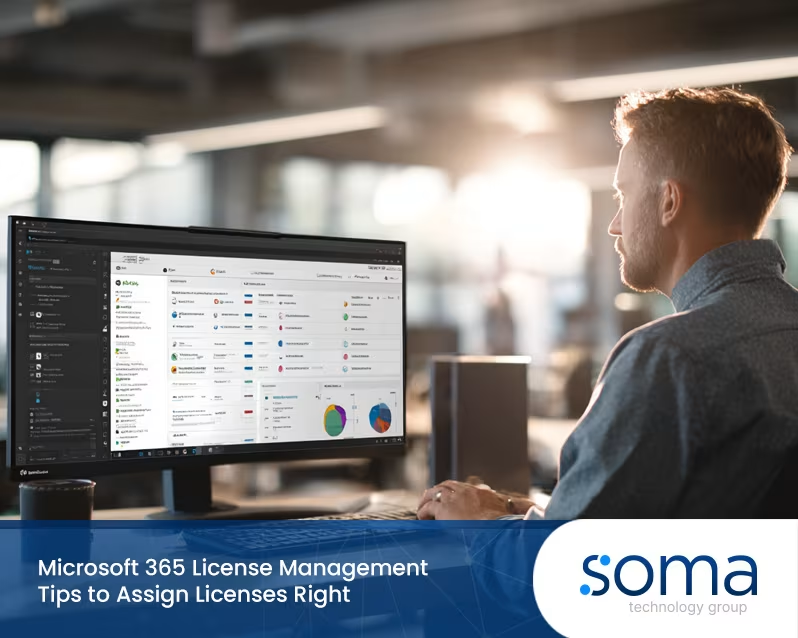
Managed IT Services Pricing: Models, Costs & MSP Options
Understanding how managed IT services pricing works is essential for businesses planning their technology budgets. Whether you're outsourcing for the first time or switching providers, knowing what you're paying for—and why—helps you make smarter decisions. In this article, we'll break down the different pricing models, what influences costs, and how to choose the right option for your business. We'll also cover service agreements, per-user and per-device billing, and how in-house vs. outsourced support compares.
What is managed IT services pricing?
Managed IT services pricing refers to the cost structure businesses pay for outsourced IT support and infrastructure management. These services are typically provided by a managed service provider (MSP), and pricing can vary based on the level of support, number of users, and specific technologies involved.
Most MSPs offer flexible pricing models to suit different business sizes and needs. These models may include per-user, per-device, tiered, or à la carte pricing. Each has its pros and cons, which we’ll explore in more detail below. Understanding these options helps you avoid overpaying or underestimating your IT requirements.

Common pricing models for managed IT services
There are several pricing models used by MSPs. Each model offers different levels of predictability, scalability, and control. Here’s a breakdown of the most common ones.
Per-user pricing
This model charges a flat fee per user per month. It’s ideal for businesses with consistent staffing levels. It simplifies budgeting and scales easily as your team grows.
Per-device pricing
In this model, you’re billed based on the number of devices—like desktops, laptops, or servers—being managed. It works well for companies with shared devices or varying user access.
Tiered pricing
Tiered pricing offers service bundles at different levels (e.g., basic, standard, premium). Each tier includes a set of services, allowing businesses to choose based on their needs and budget.
À la carte pricing
This model lets you pick and pay for only the services you need. It offers flexibility but can become costly if you require many individual services.
Flat-rate pricing
A fixed monthly fee covers all agreed-upon services. This model provides cost predictability and is often used in long-term service agreements.
Value-based pricing
Here, pricing is based on the value delivered rather than the number of users or devices. It’s less common but may suit businesses focused on outcomes rather than inputs.
Hybrid pricing
Some MSPs combine models—for example, per-user pricing for support and à la carte for project work. This approach can offer a balance between flexibility and predictability.
Key benefits of understanding your pricing model
Knowing how your IT services are priced helps you make informed decisions:
- Predictable costs make budgeting easier and reduce financial surprises.
- You can scale services up or down based on business growth or changes.
- It helps you compare providers on equal terms.
- You avoid paying for services you don’t need.
- It ensures your IT support aligns with your operational goals.
- It improves communication and expectations with your MSP.

Factors that influence managed IT services cost
Several elements affect the cost of managed IT services. These include the size of your business, the complexity of your IT environment, and the level of support required. For example, a business with 50 users and multiple locations will likely pay more than a small single-office setup.
Other factors include the type of services provided (e.g., cybersecurity, cloud management), the quality of the MSP, and whether support is available 24/7. Customisation, compliance needs, and the inclusion of hardware or software can also impact the final price.
What does MSP pricing typically include?
MSP pricing usually covers a range of services bundled into a monthly fee. These may include help desk support, network monitoring, data backup, cybersecurity, and software updates. Some providers also include strategic IT consulting or virtual CIO services.
It’s important to review your service agreement carefully to understand what’s included and what may incur additional charges. For example, some MSPs include on-site support, while others charge separately. Knowing what’s covered helps avoid unexpected costs.

How to compare managed service providers effectively
Choosing the right managed service provider involves more than just comparing prices. Here are key areas to evaluate.
Services offered
Ensure the provider offers the services your business needs, such as cybersecurity, cloud support, or compliance assistance.
Response times
Check the provider’s SLA to understand how quickly they respond to issues. Faster response times can reduce downtime.
Industry experience
Look for providers with experience in your industry. They’ll understand your specific challenges and compliance requirements.
Scalability
Choose a provider that can grow with your business. Ask how they handle onboarding new users or locations.
Support availability
24/7 support may be essential if your business operates outside standard hours. Confirm what’s included in your plan.
Customer reviews
Look for testimonials or case studies. These can provide insight into the provider’s reliability and service quality.
Contract flexibility
Avoid long-term contracts that lock you in. Look for providers offering month-to-month or short-term agreements.
Best practices for managing your IT services budget
Managing your IT budget effectively ensures you get value from your MSP.
- Review your service agreement annually to ensure it still meets your needs.
- Track support tickets and issues to identify recurring problems.
- Use reporting tools to monitor service performance.
- Plan for future growth by forecasting user and device increases.
- Set clear expectations with your provider about deliverables and timelines.
- Allocate budget for occasional project work outside your regular plan.

How soma technology group can help with managed IT services pricing
Are you a business with 20 to 1000 employees looking for a reliable IT partner? If you're growing and need scalable, cost-effective support, understanding your managed IT services pricing is critical. We help businesses like yours choose the right pricing model and services to match your goals.
At soma technology group, we work with you to build a tailored plan that fits your budget and needs. Whether you need per-user support, cybersecurity, or a full-service agreement, our team is here to guide you every step of the way. Contact us today to get started.
Frequently asked questions
What is the average cost of managed IT services for small businesses?
The average cost depends on your number of users and the services you need. For small businesses, pricing can range from $100 to $250 per user monthly. Factors like cybersecurity, remote support, and the complexity of your IT setup will influence the final price.
If you manage your IT in-house, you might save on monthly fees but face higher costs during outages or security incidents. A managed IT service provider can offer predictable pricing and proactive support.
How does per-user pricing compare to per-device pricing?
Per-user pricing charges a flat fee per employee, regardless of how many devices they use. It’s ideal for businesses where users have multiple devices. Per-device pricing, on the other hand, bills based on each device managed, which may suit environments with shared workstations.
Choosing between these models depends on your business setup. If your team uses several devices, per-user pricing may offer better value. If you have fewer users but many devices, per-device pricing could be more cost-effective.
What should I look for in a managed service provider?
Look for a managed service provider with experience in your industry, clear service agreements (SLAs), and responsive support. They should offer scalable services and flexible pricing models.
A good provider will also help you plan for growth, manage cybersecurity risks, and support compliance needs. Review their customer feedback and ask about their approach to proactive monitoring and issue resolution.
How do service agreements affect managed IT services pricing?
Service agreements define what services are included, response times, and pricing terms. A well-structured SLA ensures you get consistent service and avoid surprise fees.
Longer agreements may offer better rates but less flexibility. Shorter or month-to-month contracts allow you to adjust services as your needs change. Always review the SLA carefully before signing.
What are the main factors that influence pricing?
Several factors affect pricing, including the number of users, types of services, and level of support. Businesses with complex IT environments or high compliance needs may pay more.
Other considerations include whether support is 24/7, if on-site visits are included, and the quality of the MSP’s tools and staff. Understanding these factors helps you choose the right provider and avoid hidden costs.
How much does it cost to switch to a managed IT service?
Switching costs vary depending on your current setup and the services you need. Some MSPs charge onboarding fees, while others include it in the monthly rate.
You may also face costs for migrating data, setting up new systems, or training staff. However, the long-term benefits—like reduced downtime and better security—often outweigh the initial investment.
.svg)
.webp)


